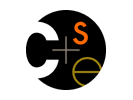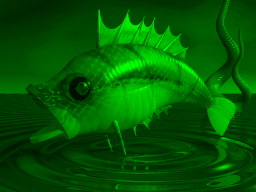
|

CSE 410 - Project 3 Images |
|
 CSE Home CSE Home |
 About Us About Us |
 Search Search |
 Contact Info Contact Info |
Here are some images created with the solution
code for project 3. Note that the images on this page are all gif
format for ease of display. The project 3 program can only read 24-bit
bmp format files. The original bmp formatted test images (
rgb200.bmp and
tn-fish.bmp
) are available if you want to do similar experiments.
 |
A couple of initial images were provided. |  |
| rgb200: basic image for testing the filters | tn-fish: another small image for testing the filters | |
 |
 |
The first filters are flip and mirror. Since the rows are all word-aligned, the flip filter can do word copies. The mirror filter does byte by byte copies since the pixels are not word aligned. |
| rgb200-1: flip | rgb200-1-2: flip, then mirror | |
| There are filters to brighten and darken the various color planes. In both of these images, the red is brightened. The color values must be clamped so that they don't exceed 255 and wrap around to 0, or conversely, go below 0 and wrap around to 255. |  |
 |
| rgb200-17-17-17-17-17-17: brighten red | tn-fish-17-17-17-17-17-17: brighten red | |
 |
 |
There are some simple filters to select one or more of the color planes. |
| rgb200-11: select red and green | tn-fish-10: select green | |
 |
The threshold filters can create interesting effects. |  |
| tn-fish-33-2: threshold red, mirror | tn-fish-33: threshold red | |
| For extra credit, one could also do simple convolution filters like mean blur, and the Laplacian of the Gaussian. In the solution, these 5x5 convolution procedures pretty much filled every available register. |  |
 |
| tn-fish-3: blur | rgb200-4: Laplacian of Gaussian | |
|
Department of Computer Science & Engineering University of Washington Box 352350 Seattle, WA 98195-2350 (206) 543-1695 voice, (206) 543-2969 FAX [comments to webmaster] | |